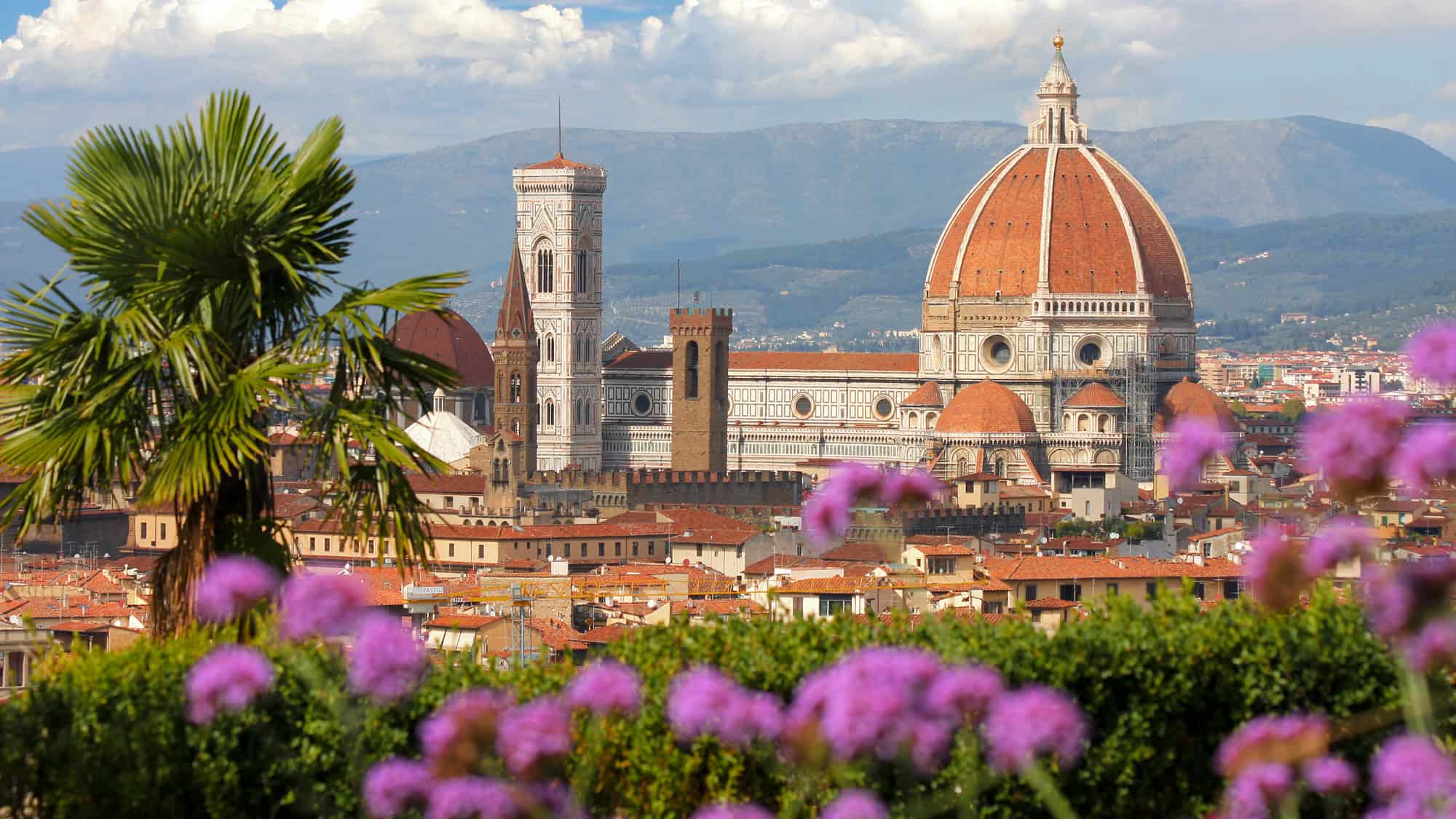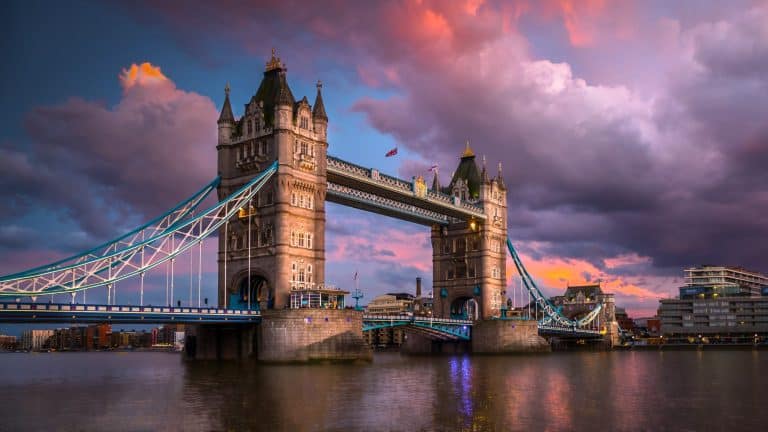Found By Accident contains affiliate links and is a member of the Amazon Services LLC Associates Program. If you make a purchase using one of the Amazon links (or other affiliate links), we may receive compensation at no extra cost to you. See our disclosure policy for more information.
12 Most Walkable Cities In Europe That Make Cars Obsolete
Europe is a dream for anyone who loves exploring on foot. Forget the hassle of rental cars and navigating chaotic traffic; some cities here seem like they were designed to be enjoyed at your own walking pace.
Meandering through cobblestone streets, stumbling upon hidden courtyards, and discovering vibrant local scenes are just part of the daily routine in these places. And you’ll feel like you’re in a real-life storybook, where every turn leads to something exciting, unexpected, or utterly beautiful.
From historic neighborhoods to modern promenades, these cities know how to cater to those who prefer a good stroll over sitting behind a steering wheel. Better yet, you’ll save on gas money and calories because there’s no better way to blend sightseeing with steps.
These walkable cities are perfect for offering an immersive way to soak up the unique character of each destination… at your own two-feet speed.
Florence, Italy

Florence is a walker’s paradise, where everything worth seeing is crammed into a compact, history-packed core that’s impossible to get lost in (thank you, Duomo sightlines).
Picture this game plan: Start at the Duomo complex (go early unless you enjoy long queues) and stroll down Via dei Calzaiuoli to Piazza della Signoria. Snap some photos at Palazzo Vecchio and head for the Uffizi, which is just a stone’s throw away.
Keep going to cross the Ponte Vecchio (famous for jewelry stores, but you’re here for the view) into the Oltrarno district, where local artisans do their thing. See if you can snag a timed ticket to the newly reopened Vasari Corridor, which connects the Uffizi to Pitti Palace without crowds or tourist madness.
On a tight schedule? You can hit the Duomo, Signoria, Uffizi, and Ponte Vecchio in just an hour. It’s practically a cardio and cultural experience rolled into one.
Paris, France

Walking in Paris is less a mode of transport and more a lifestyle. The city is laid out so perfectly that strolling from iconic sight to iconic sight is as effortless as your future Instagram captions. Case in point? Start at the Louvre, glide through the Tuileries Garden, and hit Place de la Concorde before meandering along the Seine toward Ile de la Cite.
It’s all ridiculously close, with minimal road crossings to trip up your chic Parisian vibe. And if that’s not dreamy enough, on Sundays and holidays, the “Paris Respire” program shuts down parts of the city for pedestrians… so you can wander without a single honking car to ruin the mood.
Stick to the quieter Rue de Rivoli (buses and bikes make it less chaotic) or hop across one of the many footbridges to trim your route. Pro move? Pair longer walks with a Metro trip to pace yourself, focusing on the Right Bank in the morning, Ile de la Cite mid-day, then the Left Bank in the evening.
Bruges, Belgium

If a medieval fairy tale town designed exclusively for walkers exists, it’s called Bruges. The compact historic center (think UNESCO-listed, cobbled streets, and canals) is made for exploring on foot. Everything important is within shuffle distance. In fact, many streets are either car-free or have time-restricted vehicle access.
Start at Markt square under the Belfry’s watchful eye, then casually hit up Burg, the dreamy Rozenhoedkaai, and the serene Begijnhof, all within minutes of each other. Cobblestones make the stroll charming, but do your feet a favor and wear comfy shoes.
Feeling ambitious? Loop from Markt through Burg, meander down to Minnewater Park, and return via the Begijnhof for a grand tour that fits into one perfectly walkable day. Stress-free and storybook-worthy, what more could you want?
Seville, Spain

Seville is the kind of city that makes you want to ditch maps altogether and just stroll. Why? Because everything worth seeing is practically holding hands. Start in the Santa Cruz quarter, where the Cathedral, Giralda, and Royal Alcazar huddle together like best friends.
The shaded alleys and tiny plazas here aren’t just charming, they also keep car speeds down, so no dodging traffic dramas. From Santa Cruz, it’s just a quick hop to the Archivo de Indias, then onward to the riverfront for views of Triana across the Guadalquivir.
Feeling green? Stroll over to the Parque de Maria Luisa and the grand Plaza de Espana (it’s a walkable splendor you’ll thank your feet for). And the city’s historic core is level enough that you can link neighborhoods without breaking a sweat. But if you’re visiting in midsummer, do yourself a favor and walk early or late when the pavement isn’t molten lava.
Porto, Portugal

Porto packs a punch in a petite package. With its compact heart, most of the city’s must-see spots are tucked within a two-mile radius (yes, even with those infamous hills). From the ornate Sao Bento Station, you can wander up to the Se Cathedral, conquer the Clerigos Tower (stairs included, unfortunately), and float over to Livraria Lello. All in bite-sized chunks.
Downhill streets lead you straight toward the Douro riverfront, where you’ll find cafes perfectly placed for sipping and people-watching. Feeling adventurous? Cross the top deck of the Dom Luis I Bridge for jaw-dropping views and easy access to Vila Nova de Gaia’s wine lodges.
Here’s the fine print, though: stairs and slopes are part of the deal in this city, so zigzagging your routes will save both your legs and your dignity. But the main sights in the Se and Cordoaria areas are only 10-20 minutes apart, giving you plenty of room for spontaneous detours (read: wine tastings and photo ops).
Athens, Greece

Athens doesn’t just do history; it serves it up on a giant pedestrian platter. The city’s main sights are all linked by a web of walkways, so you can basically hop from one ancient wonder to the next without dodging traffic.
Start with the stone-paved path connecting the Acropolis, Theatre of Dionysus, Ancient Agora, and the storybook streets of Plaka and Anafiotika. This route, aka the “Great Walk,” is brilliantly designed with wider sidewalks and traffic-tamed zones, so you can stroll like the Greek gods intended.
Climbing the Acropolis in summer heat? Rookie mistake. Go early or melt like feta in the sun, then hit museums during the midday blaze. And for an intro trek, start at the Acropolis Museum, circle the hill, then glide through Monastiraki and Syntagma before calling it a day… unless, of course, gelato gives you a second wind.
Amsterdam, Netherlands

Amsterdam’s got that perfect flat-as-a-pancake mood that makes wandering a total breeze. And the central canal ring is a pedestrian dream, with its short blocks, frequent bridges, and “oh, look, another beautiful crossing!” moments.
Take it easy along the endlessly charming Prinsengracht or Herengracht and soak in the views. Just watch out for the bikes (they stop for no one) and keep an ear out for trams sneaking up behind you.
Bonus because you’re walking? Those hidden courtyards called hofjes. The Begijnhof near Spui is a 14th-century escape into calm that feels worlds away, even though it’s just steps from the buzz of the city. Over in the Jordaan, hofjes hide behind unassuming doors. It’s like a treasure hunt with a reward of peace and quiet. Pro tip? Grab an old-school map to find them.
Krakow, Poland

Krakow practically begs to be explored on foot. The Old Town is wrapped in Planty Park, a lush greenbelt where medieval walls once stood, making it a shady, scenic loop for sauntering between gates and Gothic churches.
Start in the Main Market Square, where you can sip your espresso while people-watching, then it’s just a breezy 10–15 minute jaunt down Grodzka Street to Wawel Castle. Feeling daring? Head on into Kazimierz, Krakow’s former Jewish quarter, by following Krakowska Street. Don’t worry, it’s a short stroll, not a marathon.
The walking surfaces are mostly flat, with no nasty cobblestones plotting your demise (but there are some ramps on Wawel Hill, just saying). And if your sense of direction isn’t your strong suit, don’t panic. The Royal Route literally points the way from the Barbican to Wawel, like Google Maps but medieval.
Rome, Italy

Rome may be huge, but its historic center is packed tighter than an overstuffed cannoli. Between Piazza Navona, the Pantheon, the Trevi Fountain, and the Spanish Steps, you can conquer the icons on foot without running a marathon.
Turns out, distances are all under 1.3 miles, and the cobbled streets do their part to keep traffic at a crawl. And most of the centro storico falls within restricted traffic zones, so you’re less likely to encounter honking Fiats ruining all your fun.
Pro travel tip? Refill your water bottle at the Nasoni fountains sprinkled throughout the city. It’s hydration… but make it Roman. For a route worthy of a social highlight reel, start at Piazza del Popolo, swing down to the Spanish Steps, toss a coin in the Trevi Fountain (because, duh), wander past the Pantheon, then make a grand finale at Piazza Navona. And if you have just a tiny bit more energy left, cross the Tiber to Castel Sant’Angelo for sunset views.
Edinburgh, Scotland

Edinburgh’s like that effortlessly cool friend who rocks both vintage and modern styles at the same time. On one side, you’ve got the Old Town, all winding closes, hidden courtyards, and a medieval spirit.
On the other side, the New Town is a study in Georgian precision, laid out in neat grids with some of the city’s best shopping and dining. These two UNESCO-listed gems are joined at the hip by bridges, staircases, and steep cobbled streets.
Start with a stroll down the Royal Mile, running from the Castle to Holyrood Palace, and keep an eye out for side streets hiding secret viewpoints (and excellent photo ops). Cross Princes Street, pause in the lush gardens, then lose yourself in the New Town’s chic squares and George Street boutiques. Heads up, the city is hilly, but don’t worry; all roads seem to lead back to the Castle, your perfect wayfinding buddy.
Madrid, Spain

Madrid’s compact neighborhoods are like a treasure map, without the pirates (though you never know). And everything’s close enough to walk, so lace up your comfiest shoes and get moving.
Start at Puerta del Sol, then hop over to Plaza Mayor, the Royal Palace, and the Almudena Cathedral. They’re all a stone’s throw away from each other. Architecture fans, take a stroll down the Gran Via for the buildings and maybe some window shopping (or actual shopping, no judgment).
If you enjoy art, head east of Sol for the Prado, the Thyssen, and Retiro Park. This cultural trifecta is walkable and hits everyone’s must-see list. The central area’s pretty flat, plus the streets are smooth enough, so your feet won’t mutiny halfway through.
Nice, France

Nice practically begs you to slow down and take it easy. Its 4.3-mile Promenade des Anglais is like Europe’s catwalk… minus the heels and plus a lot more ice cream. Stroll alongside the Baie des Anges, find your favorite beach spot, and take in the glorious mix of turquoise waters and palm-fringed sidewalks.
When you’re ready for a change of scene, dart into Vieux Nice where the streets are narrow, the markets (like on Cours Saleya) are buzzing, and every corner seems to reveal another cute cafe or historic church. Don’t skip Castle Hill. It’s a bit of a climb, but the views across the bay are absolutely worth it.
Afternoons can get toasty in summer, so pack water, maybe a hat, and a chill attitude; the sea breeze helps, but the Mediterranean sun doesn’t mess around.
Like Our Content? Follow Us On MSN (or click the Follow Button above) to see more from Traveling In Focus.






